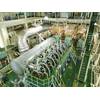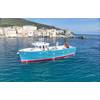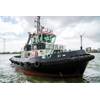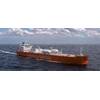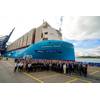Golten's Strand: Get on the Scrubber Retrofit Wave

Goltens COO Roy Strand said “When emissions regulations are applied globally, the investment in exhaust cleaning will make more sense to many operators. Photo: Goltens
As shipowners mull the technical and logistics solutions to meet the IMO's 2020 deadline regarding sulfur emissions, Goltens COO Roy Strand said “When emissions regulations are applied globally, the investment in exhaust cleaning will make more sense to many operators. There will be more customers who choose to invest in scrubber technologies due to the clear payback.”
Strand and Goltens have a stake in the solution, as Goltens Green Technologies is a leader in supplying emission control solutions. “Prior to 2018, Goltens Green Technologies had been involved in many emissions control projects evaluating the retrofit of scrubbers, but most of these projects involved cruise and ferry operators and other vessels that spend large amounts of time in the ECAs,” said Strand. “For other operators, the retrofit projects involved lower cost piping system modifications and fuel oil cooler installations to allow vessels to periodically operate on LSGO as required.”
The Scrubber Wave
The IMO mandate to slash sulfur emissions from ships has sparked global debate amongst ship owners, suppliers and classification, as this rapid step change requires immediate investment and action to ensure that ships are in compliance with the new rule when it enters force on January 1, 2020.
The time for hoping the enforcement of emissions regulations will be delayed has passed, and owners are now forced to decide on how they will comply. Until January 1, 2020 only those operating in the Emissions Control Areas (ECAs) are challenged by the lower sulfur limits, but after that date there are really only two choices: operate using emissions compliant fuels, or ensure that emissions are cleaned using an exhaust gas scrubber.
Strand has observed a major uptick in interest since the beginning of 2018, with a much broader range of companies actually pushing to retrofit with scrubbers. “This has resulted in longer lead times for scrubber delivery and increasing competition for the attention of some of the leading scrubber manufacturers. That said, it still does not appear to be the decision most owners are making.”
The Conundrum
In Skandinaviska Enskilda Banken AB’s (SEB) IMO 2020 Report, they estimate that fewer than 2,000 vessels will have been fitted with scrubbers by the implementation date, and further project a significant price delta between LSGO and HFO providing the scrubber installed vessels with a significant short-term advantage post 2020.
The SEB report highlights that this “wait and see” approach is compounded by the fact that owners pay for scrubbers (CAPEX) and charterers pay for fuel (OPEX), and that if most vessels are operating without scrubbers, the market prices will largely be set by those vessels factoring in higher fuel costs without a competitive disadvantage. The analysis further highlights that those moving to install scrubbers now will be at a competitive advantage compared to their non-scrubber counterparts in the first few years after the implementation. These first movers will likely be able to charge significant “freight rate premiums” to account for the savings on fuel associated with operating the vessel. These premiums are projected to allow for a quick payback on the initial investment as others move more gradually to scrubbers.
At that point, SEB contends that “it will be too profitable and too tempting not to install a scrubber in 2020”.


